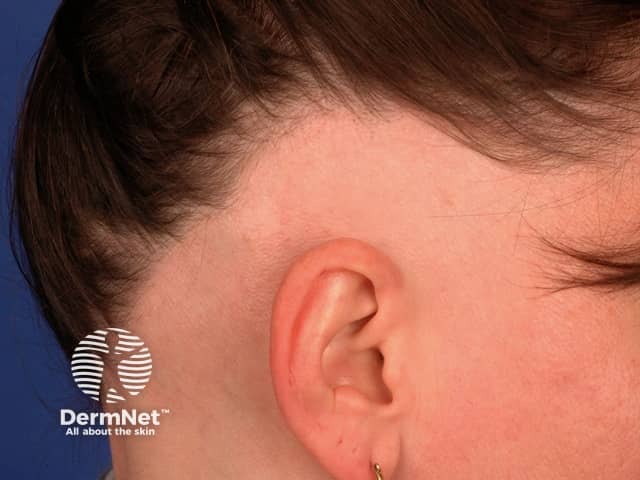Baricitinib (Olumiant, Eli Lilly and Company) produces significant hair regrowth in adolescents with severe alopecia areata (AA), according to results from a 52-week Phase 3 randomized trial presented at the 2025 Fall Clinical Dermatology Conference in Las Vegas, NV.
Overall, more than 50% of adolescents treated with baricitinib 4mg achieved a successful scalp hair response by Week 52, with a response rate reaching 71% among those with baseline Severity of Alopecia Tool (SALT) scores of 50–94. Successful regrowth was also observed with baricitinib 2mg, and no new safety signals were seen.
BRAVE-AA-PEDS randomized 257 adolescents with severe AA 1:1:1 ratio to placebo, baricitinib 2mg, or baricitinib 4mg. Those on placebo were re-randomized to baricitinib arms at Week 36, unless they had experienced a spontaneous remission.
Overall, 54.1% of participants treated with baricitinib 4mg and 31.0% with baricitinib 2mg achieved SALT scores of ≤20 at Week 52. Higher response rates were achieved by participants with baseline SALT score 50–94 (severe AA) compared to those with SALT score 95–100 (very severe AA) at Week 52, the study showed.
With baricitinib 4mg, 71% of adolescents with severe AA at baseline achieved SALT score ≤20 compared to 44.4% with very severe AA at baseline. With baricitinib 2mg, 58.6% participants with severe AA achieved SALT score ≤20 compared to 16.4% with very severe AA.
For SALT score ≤10, response rates for baricitinib 4mg and 2mg were 41.2% and 26.2%, respectively. The proportion of participants with Clinician Reported Outcomes (ClinRO) scores 0/1 (full hair or minimal gap) with at least 2-point improvement at Week 52 for baricitinib 4mg and 2mg were, respectively, 64.8% and 27.8% for eyebrows, and 63.3% and 34% for eyelashes.
Study Author Brittany Craiglow, MD, an Adjunct Associate Professor of Dermatology at the Yale School of Medicine in New Haven, CT, sat down with The Dermatology Digest® to discuss the study’s findings, the possibility of a label update, and the unmet need for treatments for adolescents with severe AA.
TDD: What does this study add to what we know about baricitinib in adolescents with AA?
Brittany Craiglow, MD: “This represents the largest clinical trial to date for adolescents with alopecia areata (AA). We now have 52 weeks of data demonstrating remarkable efficacy in severe AA, with over half of patients achieving complete or near-complete scalp hair regrowth. Perhaps even more exciting is that among patients with baseline SALT scores of 50–94 (corresponding to 50–94% scalp hair loss), this increased to 71%, further adding to the growing body of data supporting the importance of intervention before patients have a complete loss of scalp hair.”
TDD: Is baricitinib used off-label in kids with AA in the US?
Dr. Craiglow: “Although there are barriers to access, baricitinib is presently used by some dermatologists for the treatment of pediatric patients with AA. Because baricitinib is approved in patients as young as age 2 for the treatment of atopic dermatitis and juvenile idiopathic arthritis in over 40 countries outside the US, we have dosing and safety data in young children, so it is the most appropriate JAK inhibitor for off-label treatment of AA in this population. Furthermore, because we now know that earlier intervention with systemic therapy yields better outcomes, treatment of younger patients is paramount to changing the trajectory of their disease and ultimately their lives.”
TDD: Why do we need more systemic AA drugs for this population (unmet need)?
Dr. Craiglow: “Presently, we only have one US Food and Drug Administration (FDA)-approved treatment for AA—ritlecitinib (Litfulo, Pfizer)—and while its approval represented a major milestone, not all patients respond to it. Having another treatment option for this often devastating disease is absolutely crucial to impact as many lives as possible. In addition, given its approvals for other conditions outside the US in patients as young as age 2, baricitinib carries a welcome legacy of safety in this population.”
PHOTO CREDIT: DermNet


